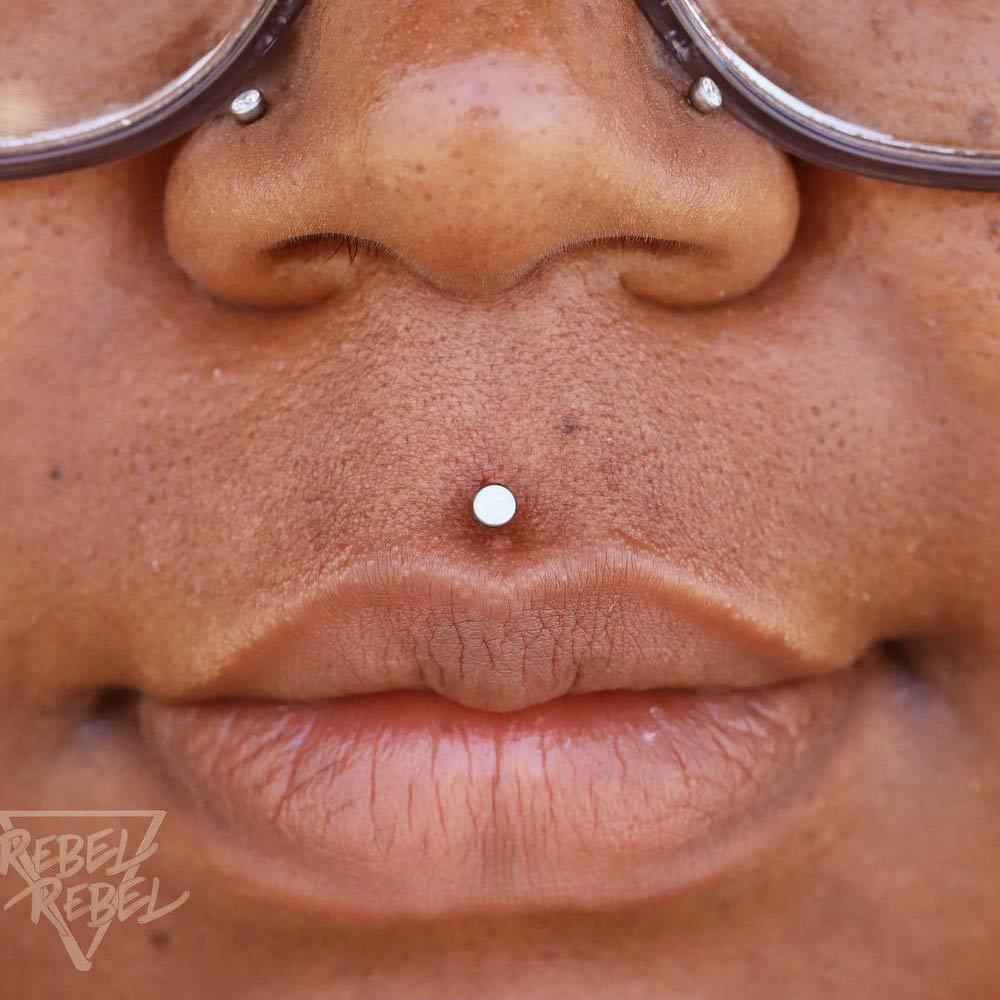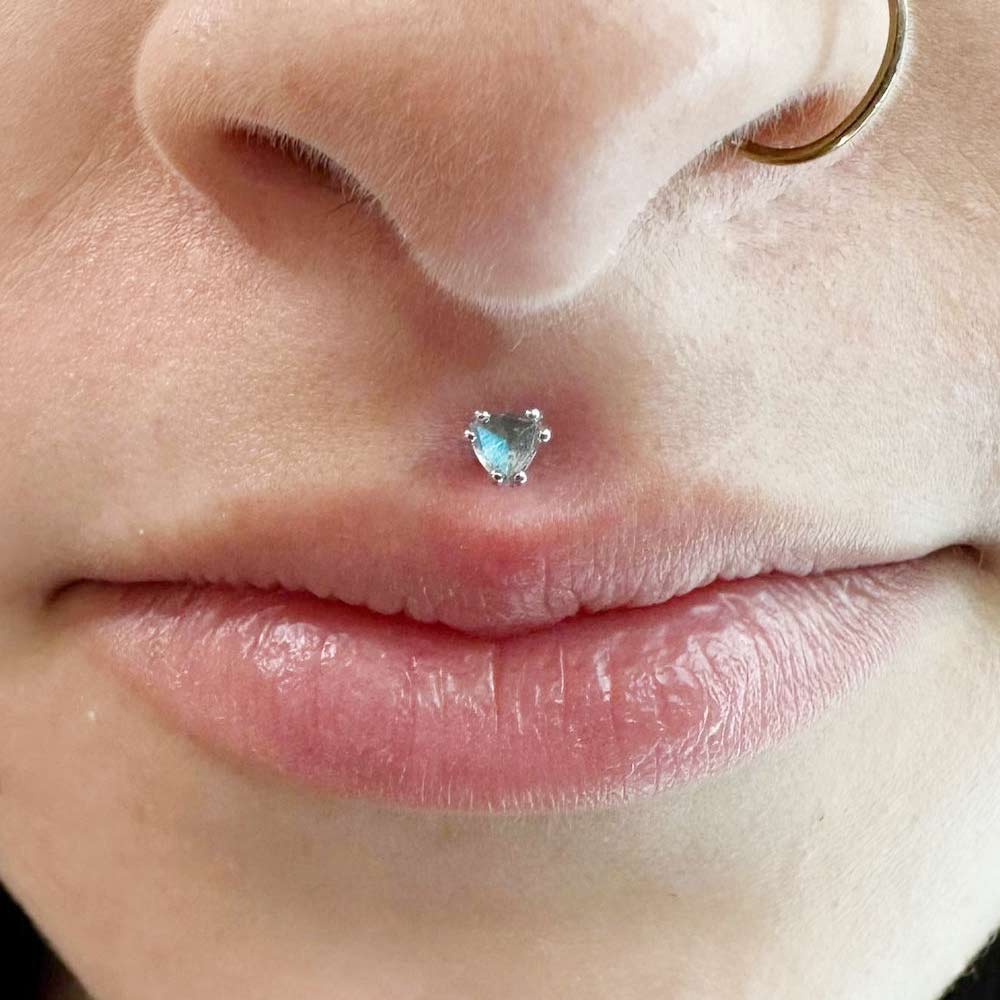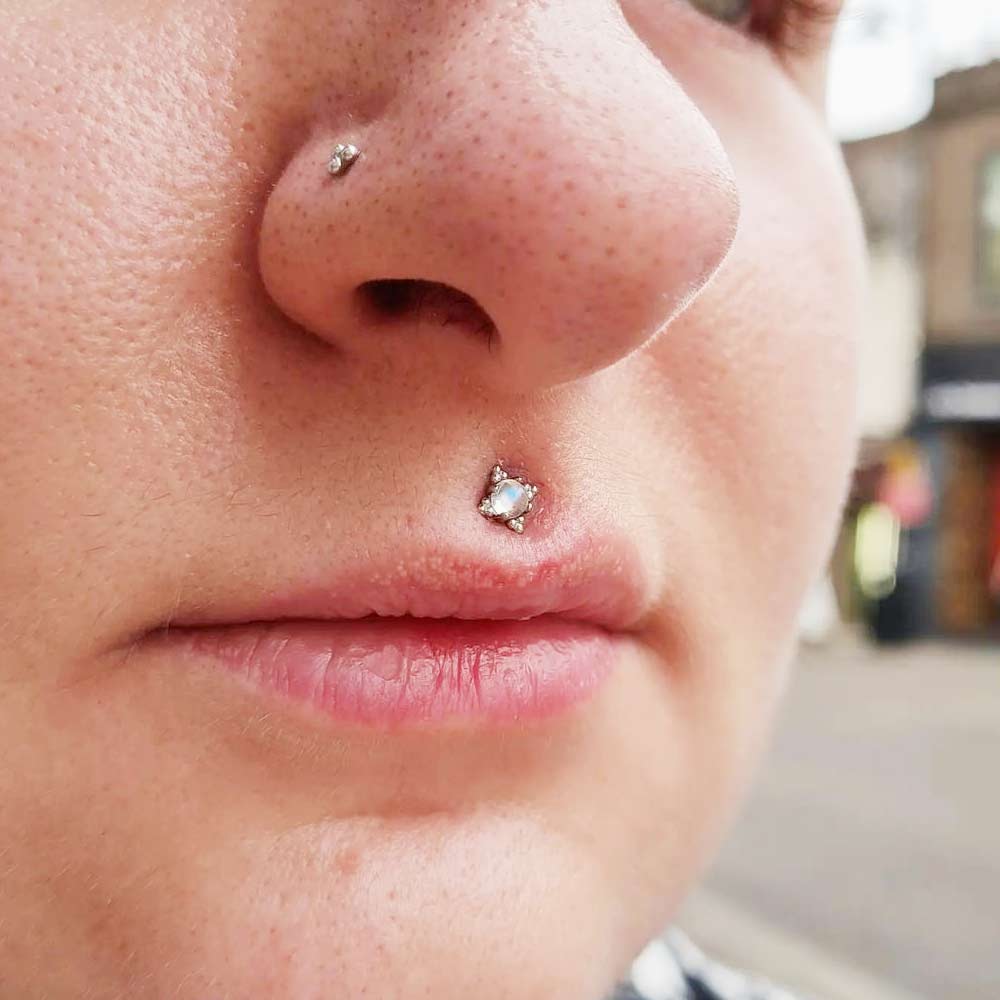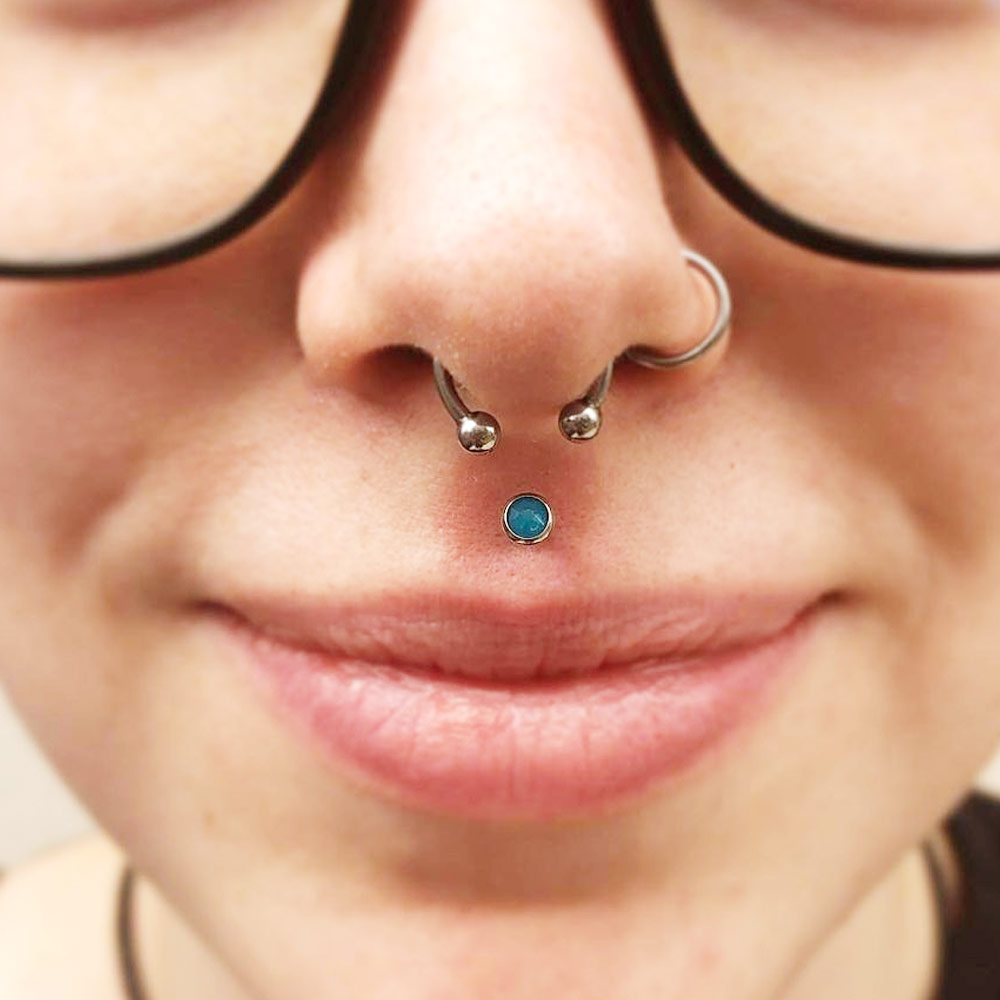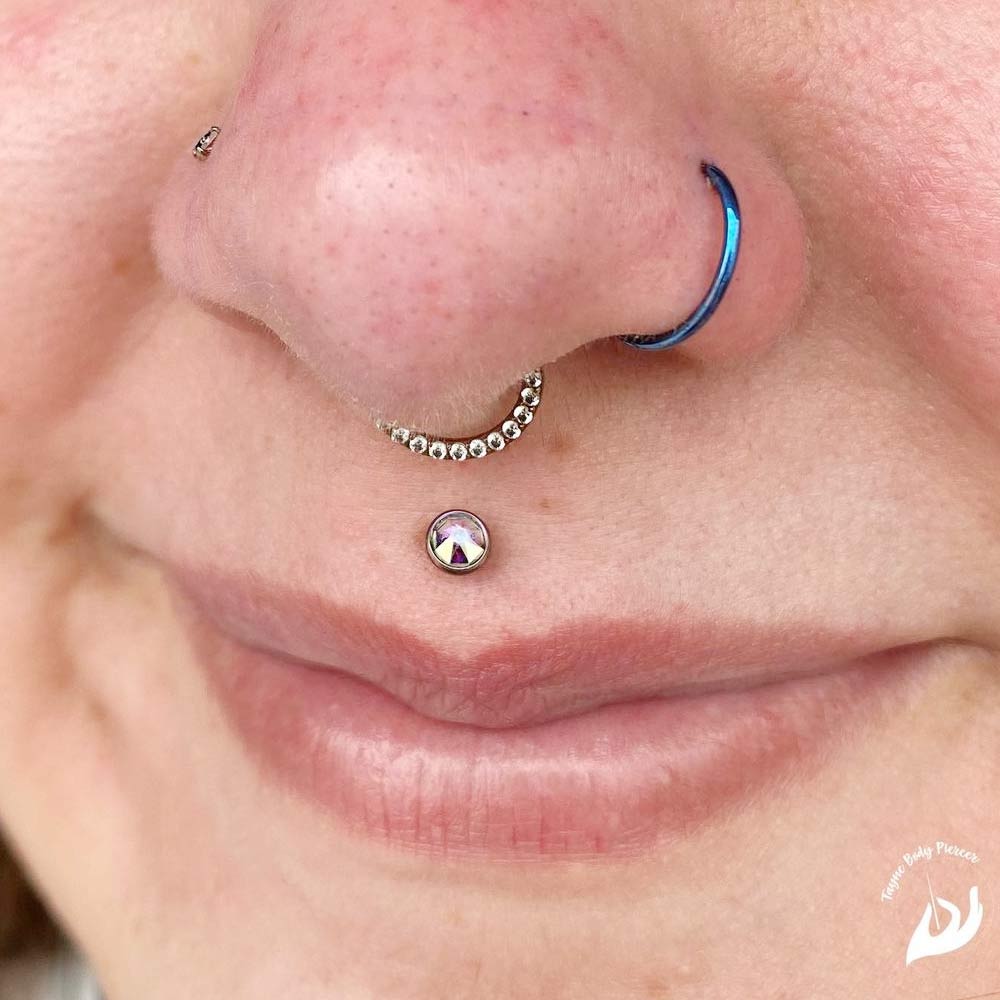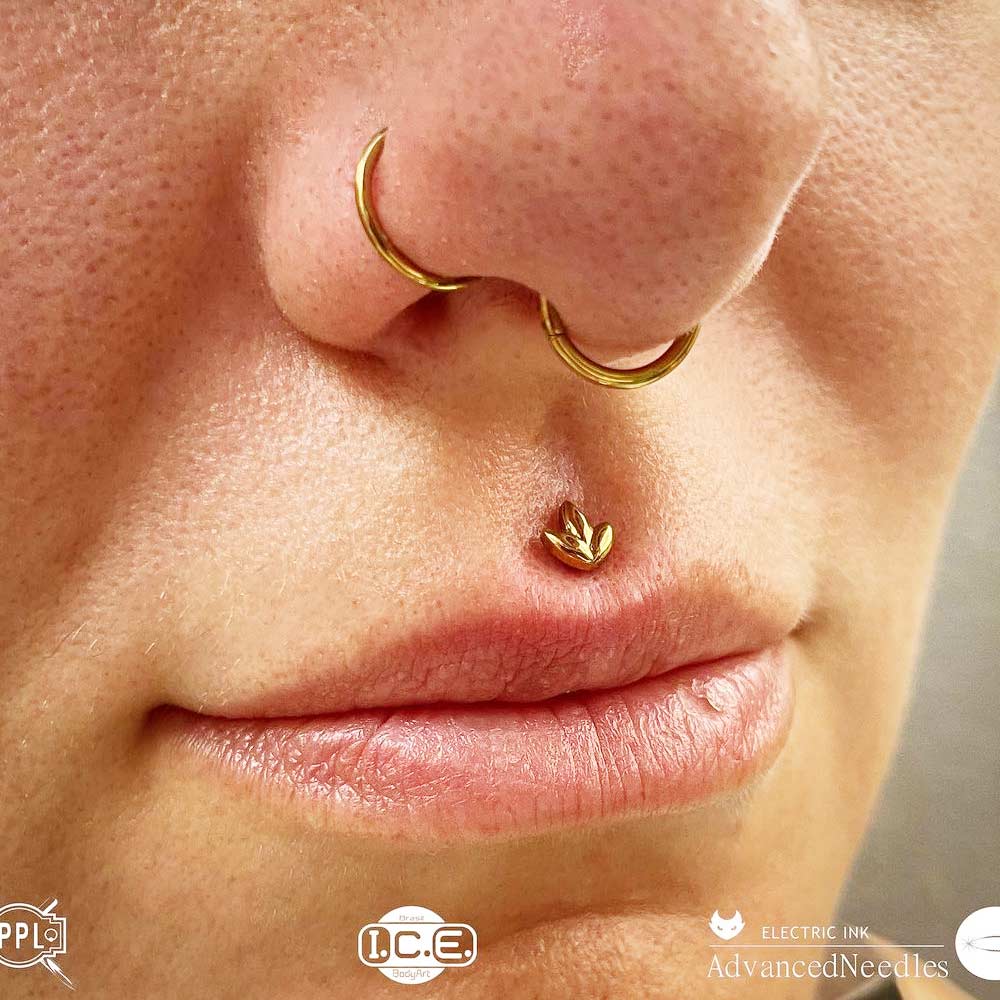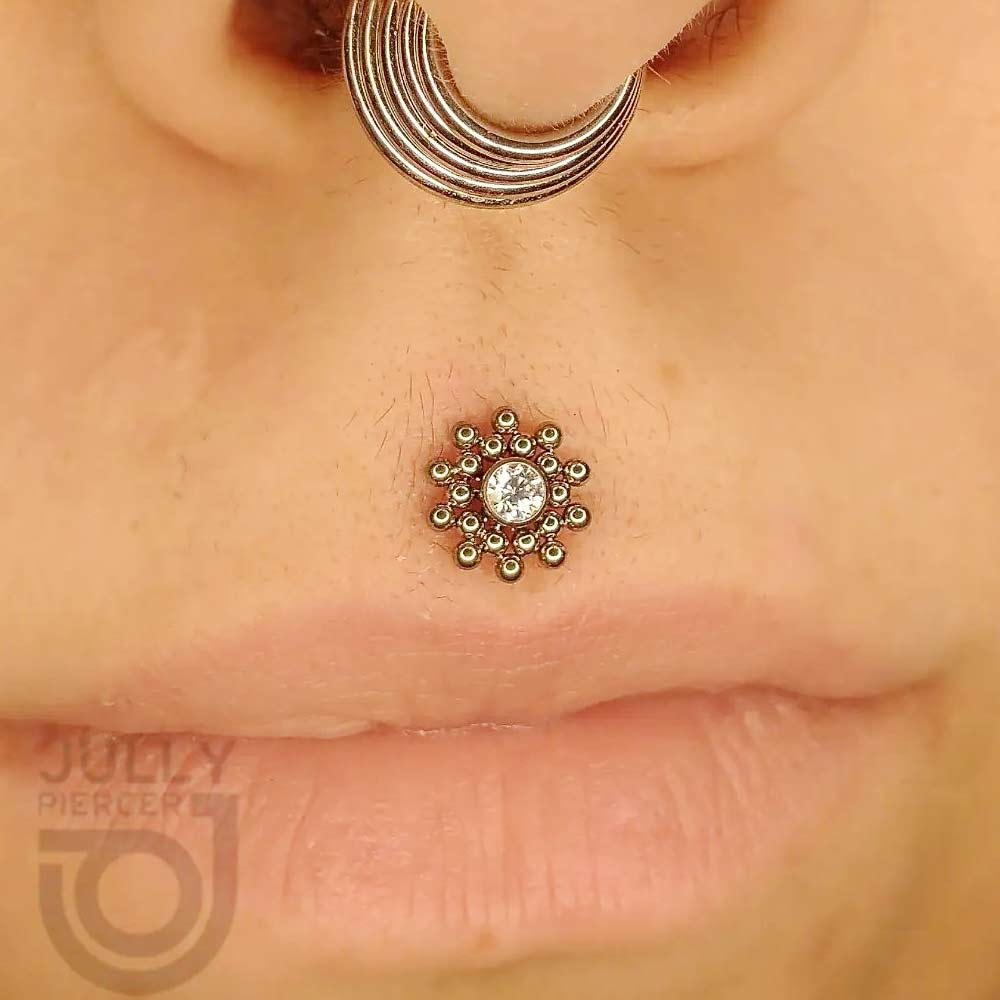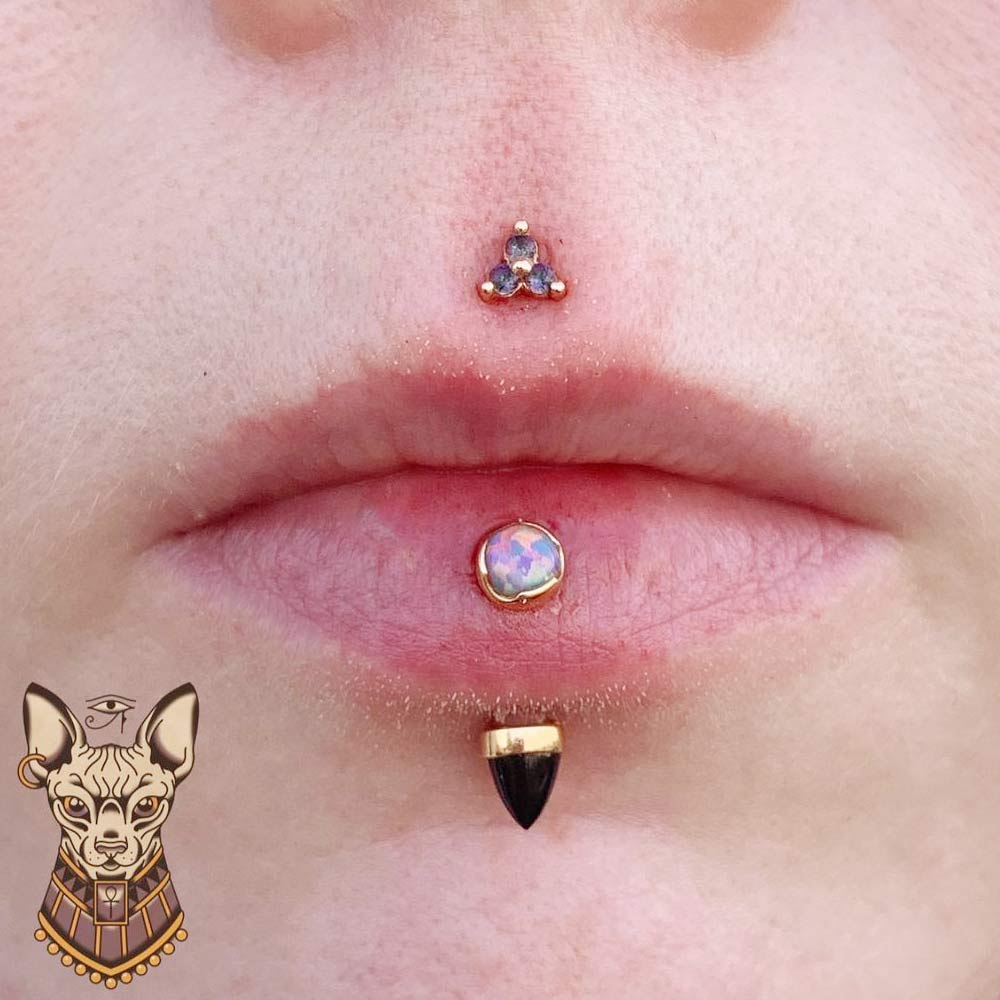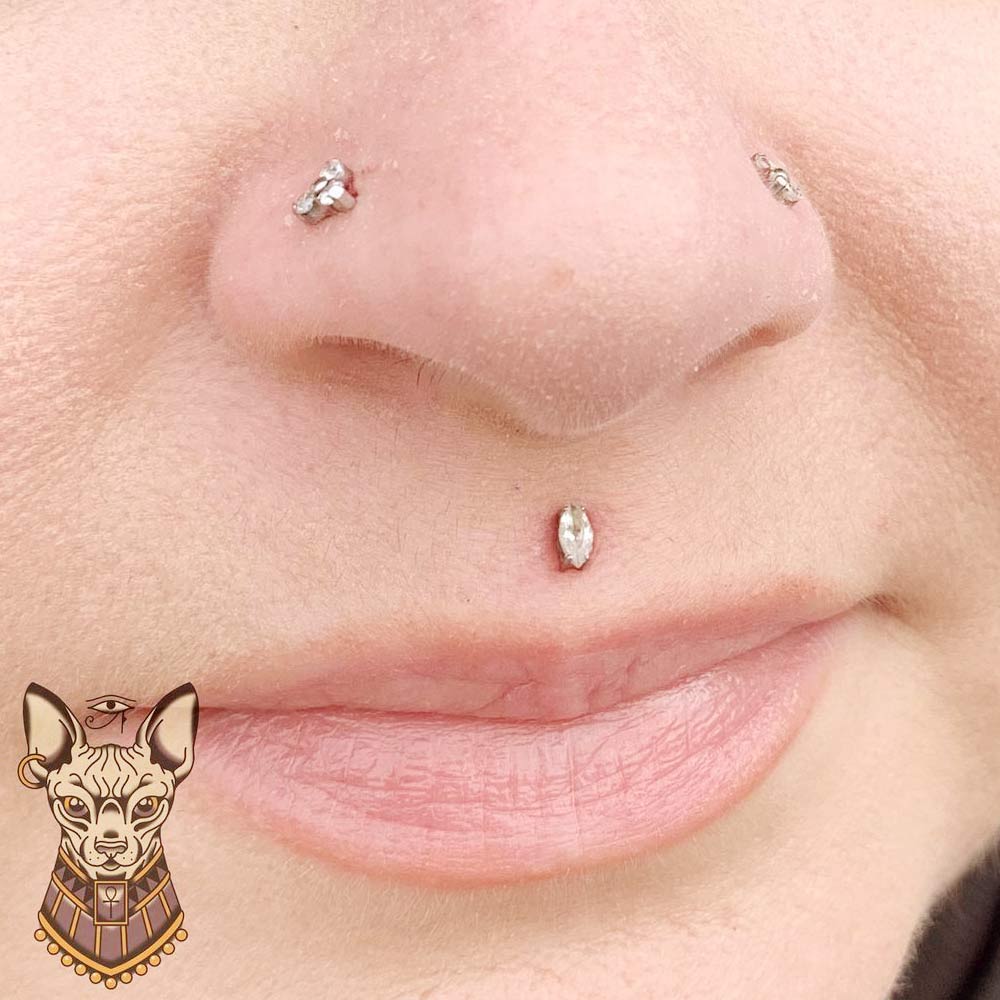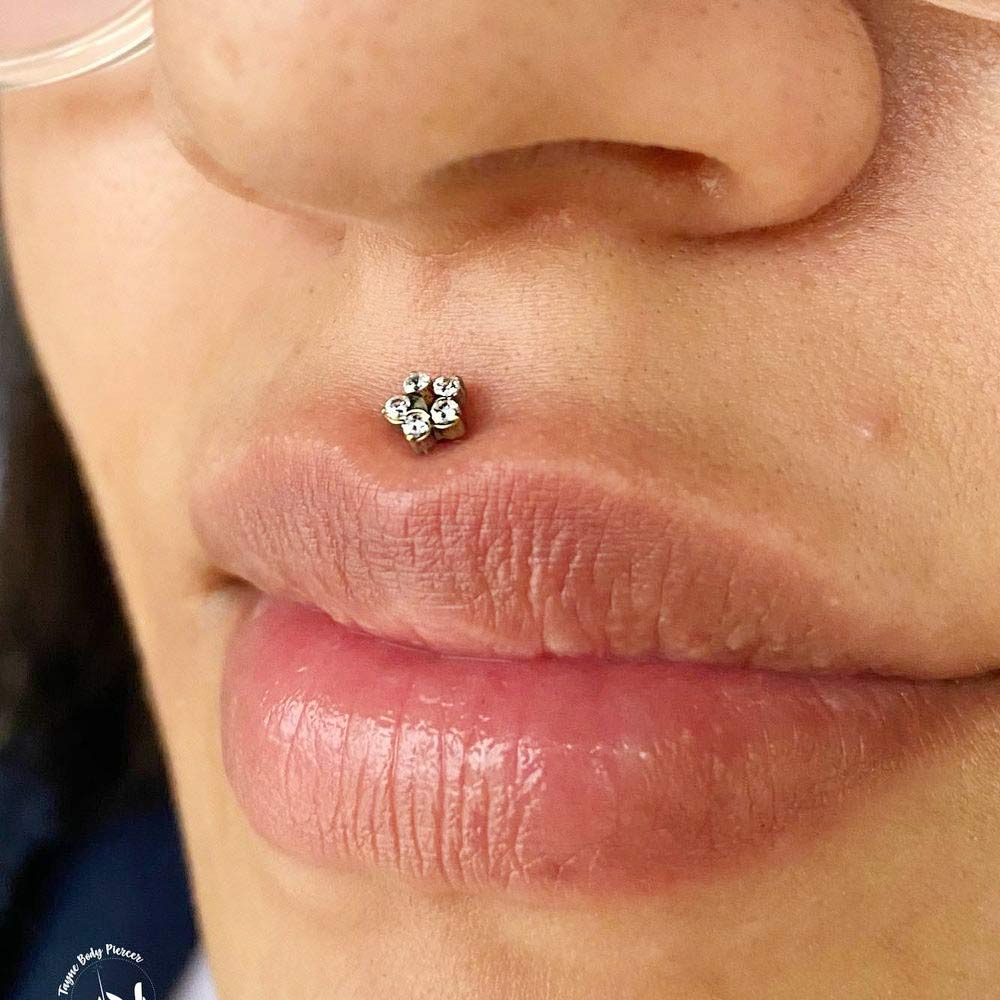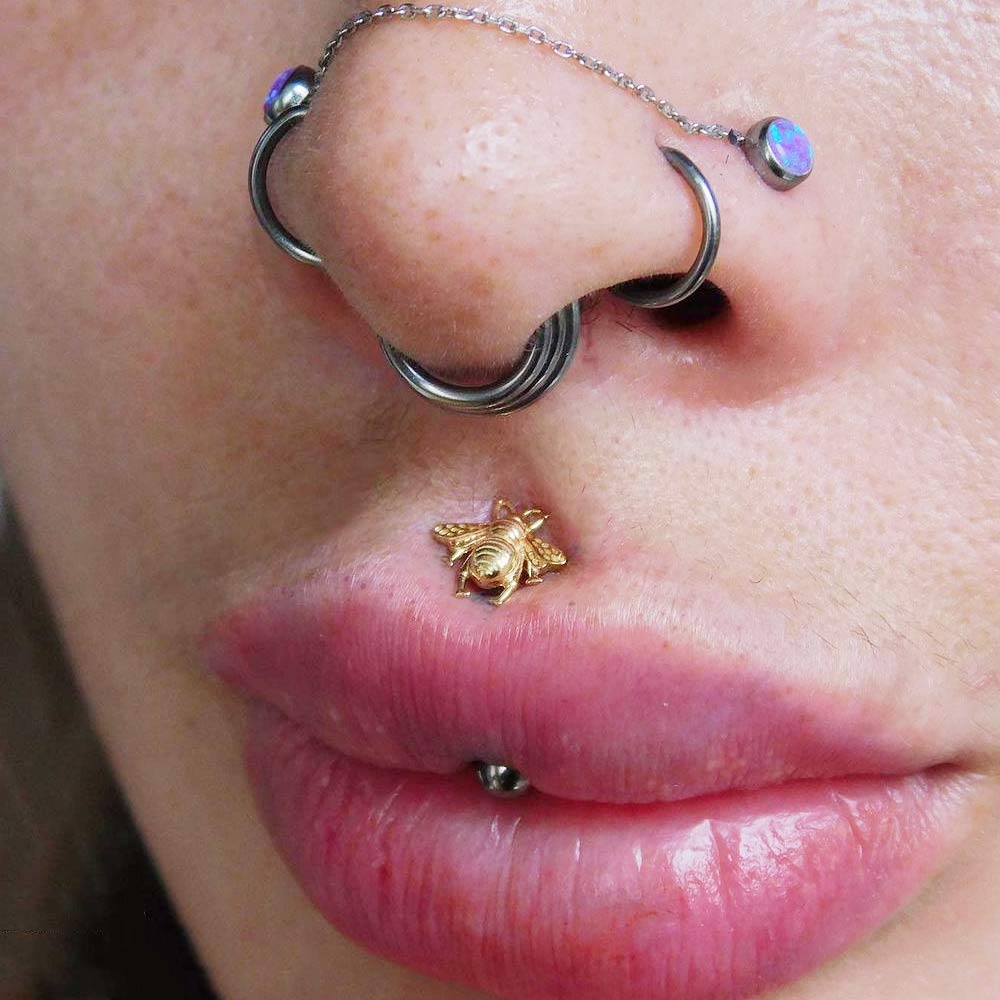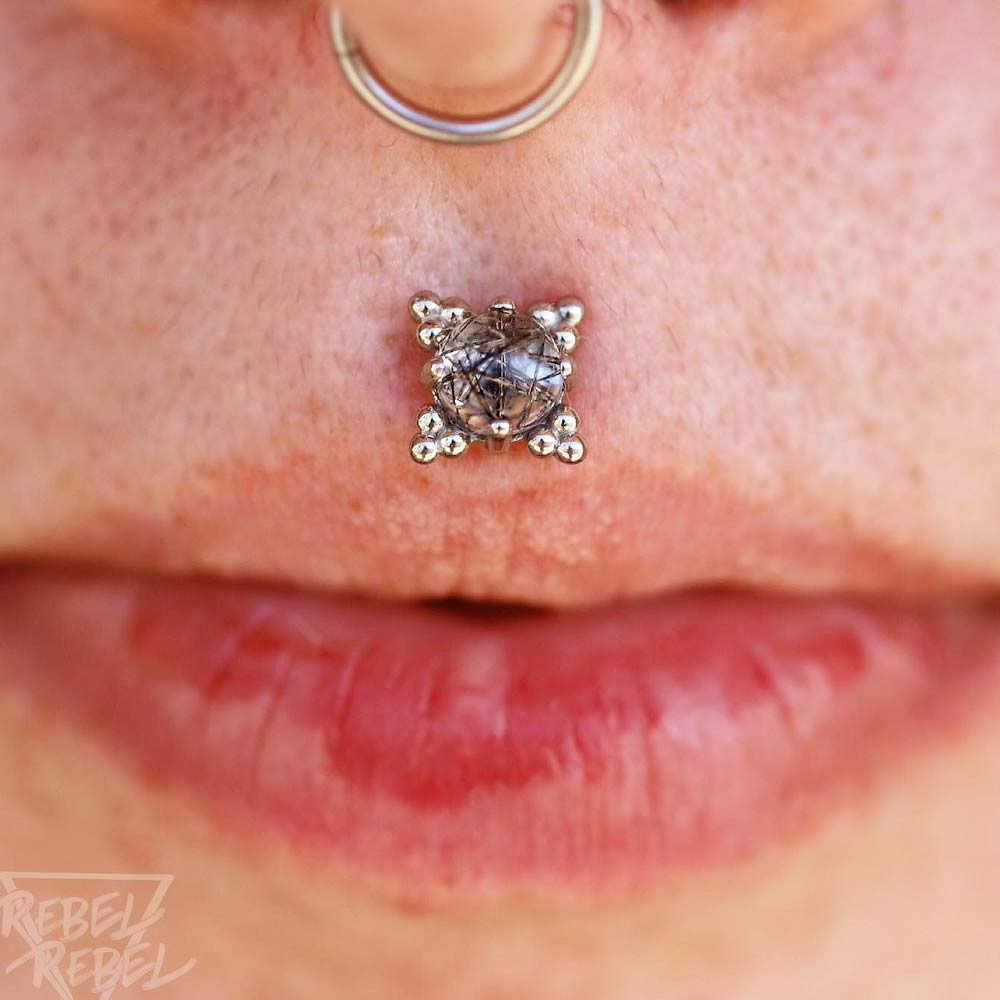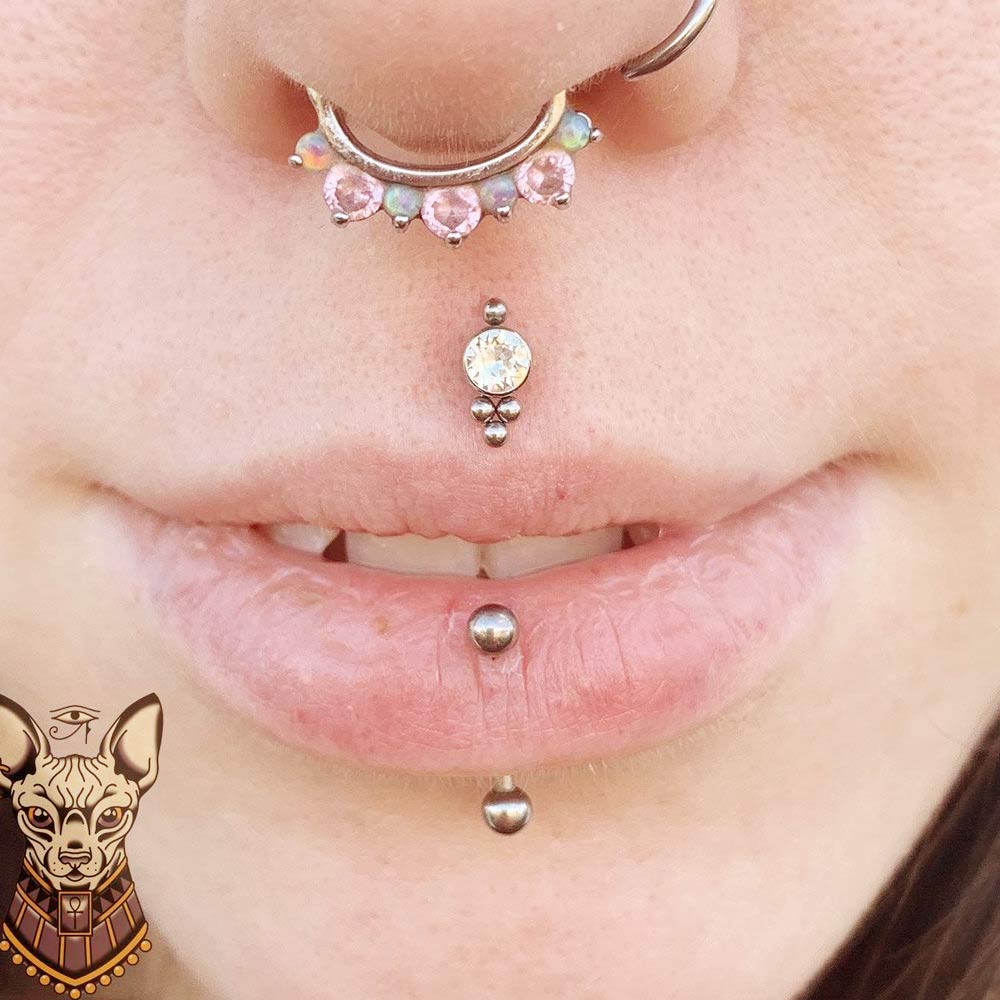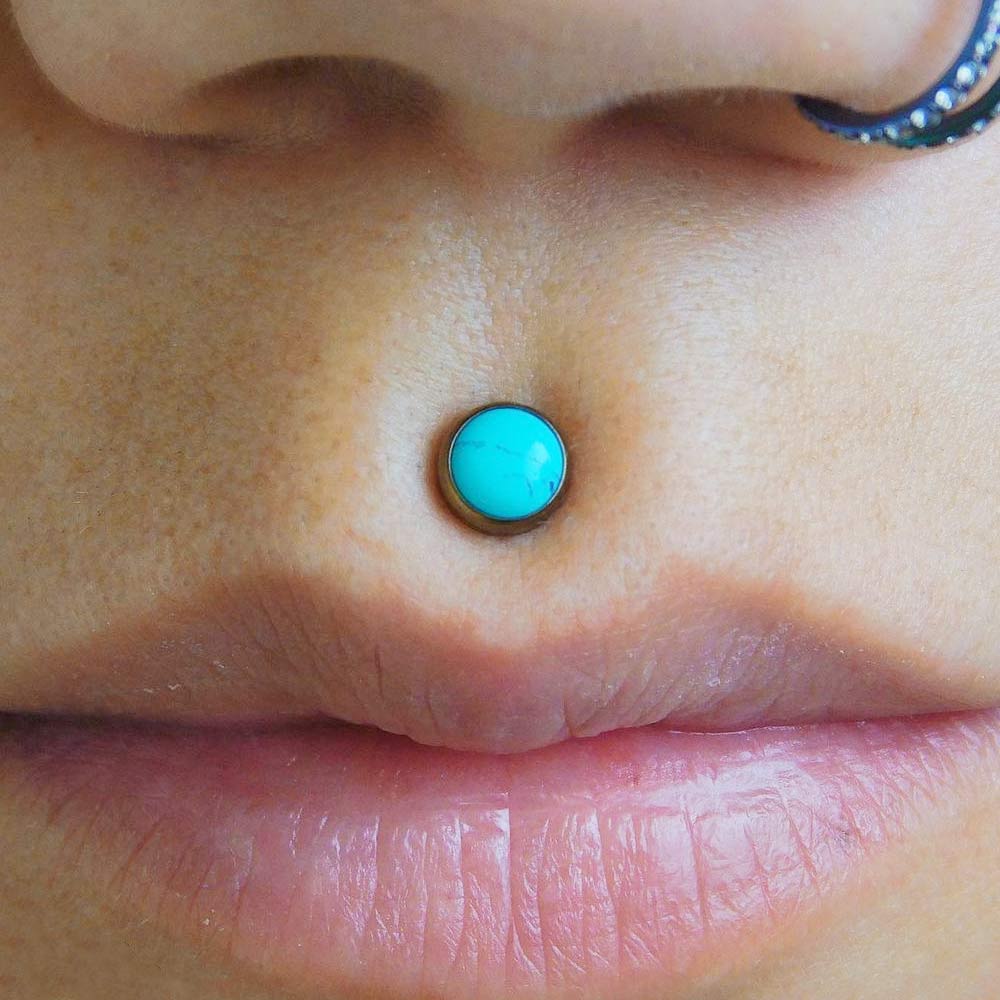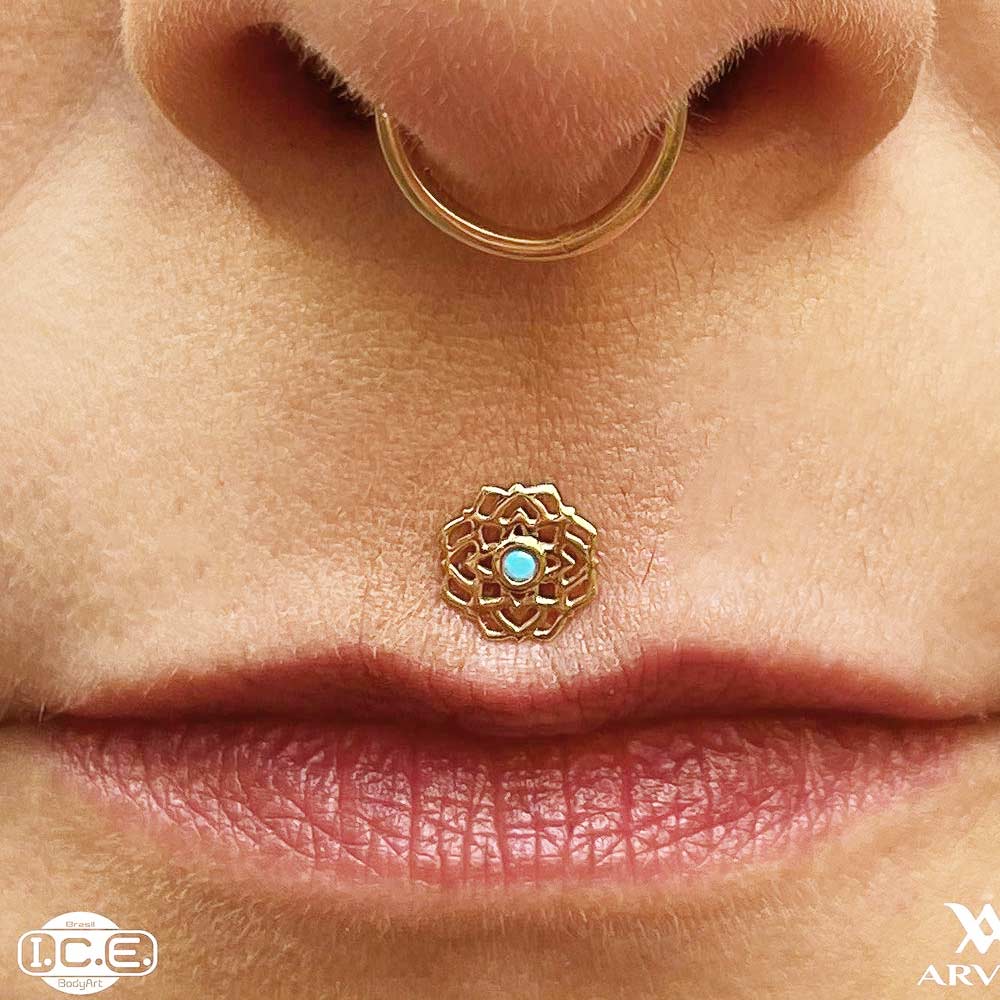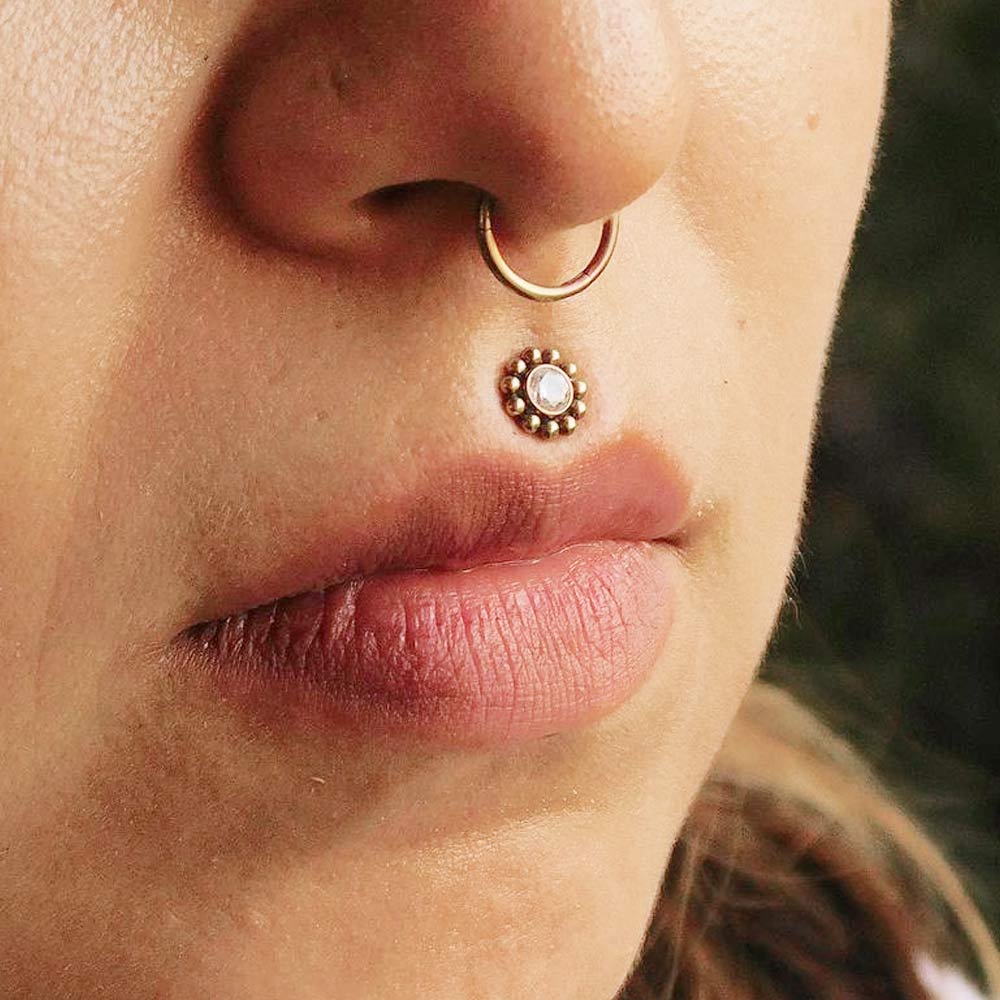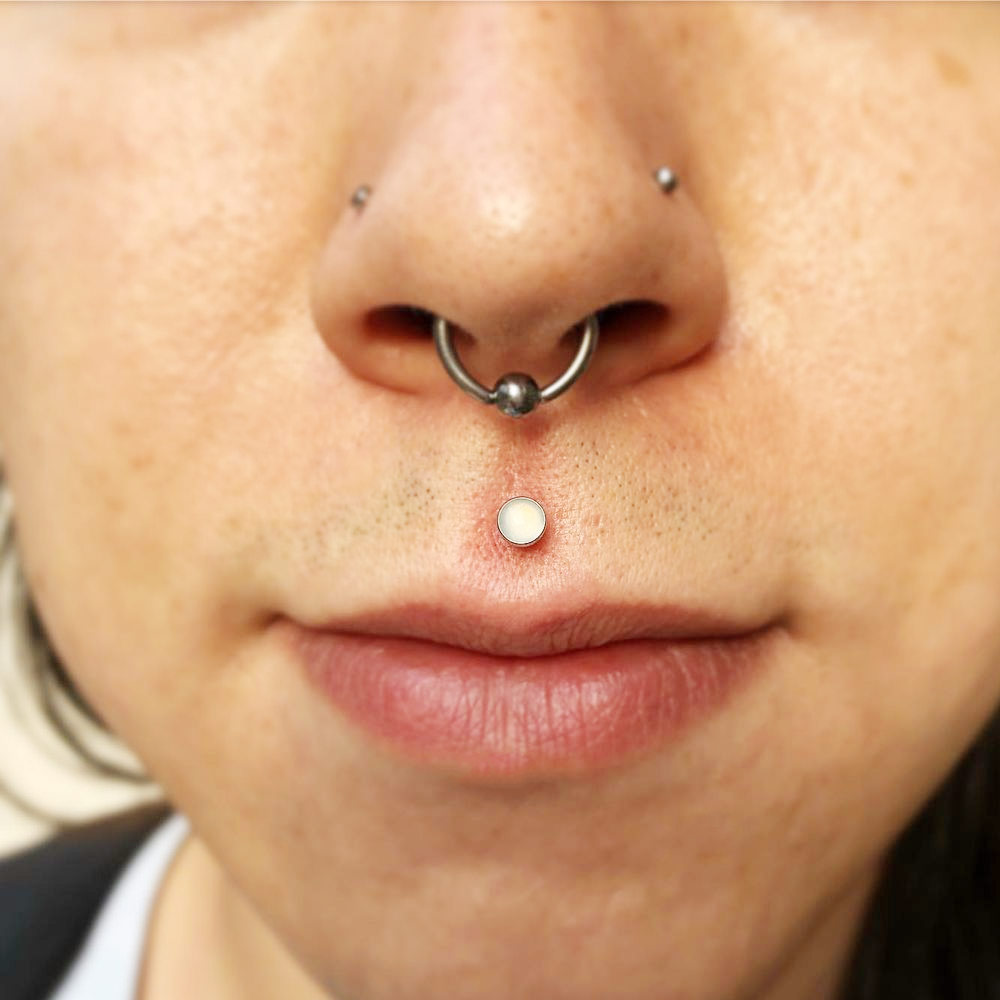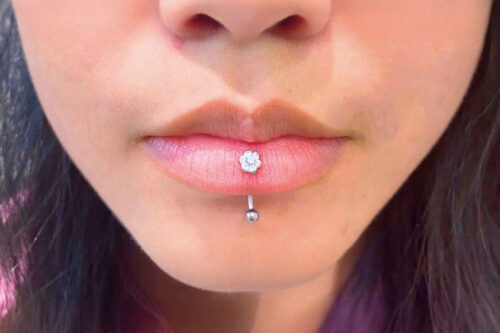Many people these days dream about getting a peculiar type of face piercing, and medusa piercing wouldn't be a striking exception. However, aside from getting ready to have this body mod done, you should remember that a proper aftercare routine is a lot more important than the courage you gain to get the lip pierced. To be absolutely sure that you are ready to commit to such a delicate and pretty demanding type of piercing, you need a detailed guide at hand. That is precisely what we will provide you with today!
*We may earn money from affiliate links on this page. Please check out our disclosure policy for more details.QUICK NAVIGATION
- Medusa piercing. What is it?
- The Jestrum or Vertical Medusa Piercing
- Pain and Healing
- How To Choose A Professional Piercer For Medusa Piercing?
- Aftercare Tips
- Jewelry for Medusa Piercing
- Potential Risks and Side Effects
Medusa piercing. What is it?
Before you continue with the healing tips and other vital bits of info, you need to fully understand what is a medusa piercing. Clearly, it is a type of top lip piercing. However, most people think that Medusa is just a cupids bow piercing, while it is located right above it. Surely, many experts claim that a Medusa is just a lip piercing, yet the scientific term Philtrum is another, let aesthetic but the more academic name of the piercing. All due to the same name that the location bears.
The Jestrum or Vertical Medusa Piercing
Now, when you know what's a medusa piercing, you may consider yourself ready to book a piercing shop appointment. However, we've got news for you – there's an intricate alternative to medusa piercing, called vertical medusa piercing. While the entry point coincides with the philtrum location, the exit is visible from the outside too. The fact is that the exit point is through the upper lip instead of being hidden behind the lip tissue. This is a quite requested type of Medusa piercing and truly looks intricate and appealing.
Pain and Healing
There is a circling opinion that any type of cupids bow piercing is extremely painful and takes quite a period to heal completely. While, there is a grain of truth to the assumption, medusa piercing pain can't compare with that of a nipple piercing, yet, it surely hurts more than a belly button variation or a popular snake bites option.
As to the medusa piercing healing time, it ranges up to 3 months. Primarily the healing time depends upon your genetic predisposition and, of course, the aftercare. A crucial point to keep in mind – the second day after the piercing is the worst since the area swells and hurts when you try to touch it. Yet, the only way to deal with it is to live through the day without taking the jewelry out.
How To Choose A Professional Piercer For Medusa Piercing?
For a successful Medusa piercing experience, you need to use a reasonable approach to choosing a piercer. It guarantees that the procedure will go well and you will be satisfied with the result. To make the right choice, follow these tips:
- Do research on piercing studious near you. Find out if there are any studios that provide piercing services in your neighborhood. You can do research online or get your friends’ recommendations.
- Make sure they have certificates and licenses. Both the person piercing you and the studio where they provide their services should have certificates and licenses confirming their professionalism and compliance with standards.
- Collect recommendations and reviews. Check what people who have already used their services write online about the piercer and the salon. Consider how much positive feedback they got. Your friends may also recommend the place where they got their Medusa piercings.
- Check out the studio personally. It is a good idea to pay a visit to the studio you are planning to get your piercing at. In addition to inspecting the condition of the studio, which should be impeccably clean, you may ask additional questions.
- Book a consultation. You should be able to get a consultation from the piercer regarding the procedure. Tell them where exactly you want to locate the piercing and what jewelry you are planning to use.
- Inquire regarding hygiene rules. It is important that the studio complies with the hygiene rules, which may include sterilizing the tools, keeping the environment spick and span and other practices.
- Ask about the jewelry. The jewelry that is going to be used for your freshly made piercing should be of premium quality and should not cause allergies. So, be sure it is made of titanium, niobium or surgical steel.
Aftercare Tips
When it comes to almost any type of lip piercing, you should be immensely careful with it while it is still healing so that you don't get it infected. Philtrum piercing fits the category. Thus, you should stick to the following pieces of advice to have it heal well and in no time.
- Since the area swells, you should wear the jewelry big enough to withstand the process without causing any pain or discomfort.
- Stick to high-quality jewelry types, such as titanium, stainless steel, and precious metals.
- Keep the hands off the piercing to avoid unnecessary infection.
- Make sure that the piercing is dry to prevent the bacteria from spreading.
- Put the makeup routines away for a week or so.
- Try not to smoke and drink.
- Rinse the mouth every time you've just had a meal.
- Keep the outsides clean with antibacterial soap.
Jewelry for Medusa Piercing
When you pick out the Medusa piercing jewelry, it should be not only stylish but also comfortable. So, keep these tips in mind for a better experience:
1. Materials.
You should never skimp on the jewelry for Medusa piercings. So, make sure the quality of the material is superb. Also, so that it does not irritate your skin, go with hypoallergenic items. The most popular piercing materials are as follows:
- Surgical Steel: One of the safest and most common options.
- Niobium: Does not cause an allergic reaction.
- Titanium: Non-allergenic as well.
- Biocompatible Material: Jewelry made of biocompatible material is created specifically to be used in piercings.
2. Styles.
- Flat back and labret studs are among the most popular jewelry options for Medusa piercings. This is because their backplate is flat, so they feel comfortable to wear. Plus, the top remains on display, so you may choose whatever style you like.
- As for the style of the top, here you are offered quite a wide selection of options, such as rhinestones or other gems, spikes, balls, etc. It can also be custom made to show off your individuality.
3. Sizing. You should match the size of Medusa piercings to the anatomy of your lips and the look you are striving to achieve with it. Ask your piercer for advice on the most suitable size of jewelry for you.
4. Length. When choosing jewelry length for your piercing session, it is important to take into account the fact that your skin is going to swell when healing. So, the labret stud should be a bit longer at first so that there would be room for swelling. As soon as it is gone, you can switch to a shorter labret stud.
5. Threading. Medusa piercing jewelry may have threaded and threadless ends. In the first case, the top is screwed onto the stud. And in the second case, you press it on. While there is no big difference between the two, a threadless system can be changed more easily.
6. Embellishments. Jewelry tops for Medusa piercings may be plain or have gemstones. In case you choose the latter, it is crucial to check that the gem is secure. You do not want it to come loose, as you may choke on it.
Potential Risks and Side Effects
Although Medusa piercings look so impactful and trendy, they still entail certain risks. So, you should stay informed about them.
- You can introduce infection to your piercing. Every piercing is prone to get infected if you do not follow the aftercare routine properly. For medusa piercings, what makes things worse is the fact that your mouth harbors bacteria. That is why you should not neglect cleaning and looking after it.
- It will hurt and get swollen. Your newly made piercing will almost certainly hurt and become swollen. The intensity is individual for everyone. However, it should all be gone in 3-7 days.
- You may experience issues with gums and teeth. Because of the placement of medusa piercings, they may interact with your gums and teeth. If you bite the stud by accident, you may get chips on your teeth or injured gums. In the future, it may result in damaged gums and tooth enamel.
- It may cause allergies. An allergic reaction to certain materials (e.g., nickel) of medusa jewelry is pretty common. To avoid it, you should look for jewelry that is hypoallergenic and of great quality, such as titanium, niobium, surgical steel, etc.
- You may end up with a scar or keloid. If your skin tends to develop keloids, then there is a risk that your piercing may begin to scar. This may also happen when aftercare is not followed diligently.
- Other complications may occur. Your piercing may migrate or your body may even reject it. While rare, there is still a risk of complication that you can experience after getting Medusa piercings.
Medusa piercing is capable of many things, and lighting up your face and emphasizing your style are just to name a few. Choose the variation that suits you most and enhance your style to the fullest!
FAQ: Medusa Piercing
Can a Medusa piercing go wrong?
Can you kiss with a Medusa piercing?
Can you eat after a medusa piercing?
Was this article helpful?






